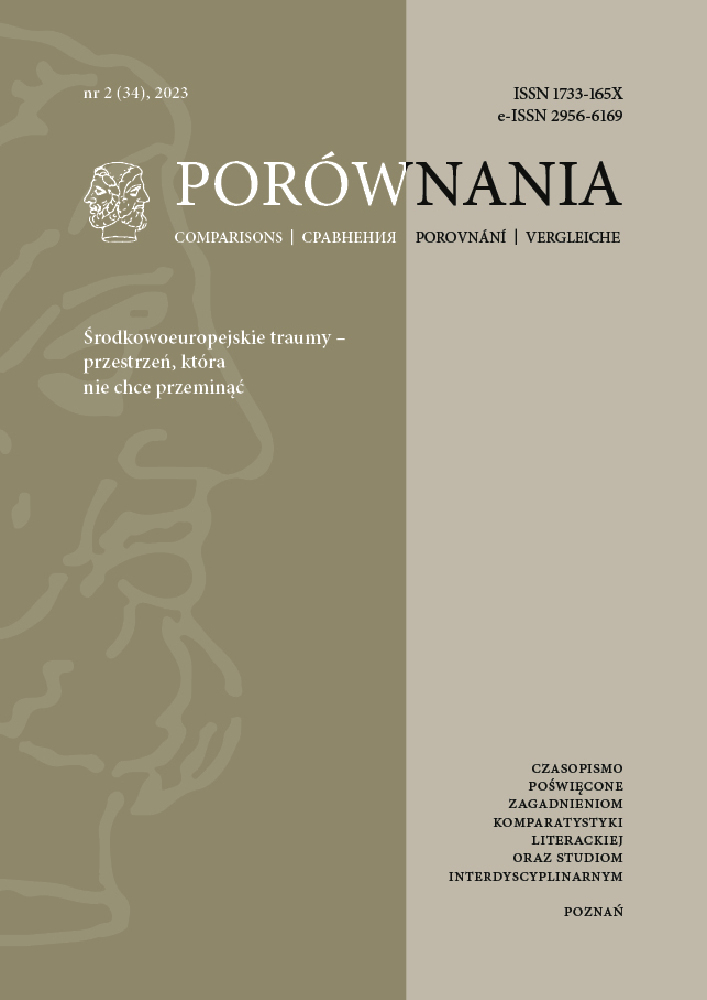Abstrakt
In the case of deep trauma, literature is often unable to speak. In the Hungarian literature of Vojvodina, the general silence concerning the changes of empire and the reprisals describes the traumatic experience as an impulse that is impossible to put into a narrative. Nándor Burány’s book-length trauma novel, Összeroppanás (Implosion), published in 1968, looked back on the events from a quarter of a century later and for the first time thematised the task of processing transgenerational trauma. The novel’s distinctive feature is that it introduces the concept of trauma itself by asking questions about the identification of the time of the traumatic rupture. The real subject of his poetics is the way trauma works and its ineffable nature. The double vision so characteristic of trauma stories becomes here an important structural figure. In the moody world of trauma-induced thinking, the necessity and impossibility of speech at once torments the central figure of the novel. The novel is set in a space of cumulative trauma and processes trauma as a social construction based on lived experience. It also makes the point that trauma in this space cannot be located in a single inherent violent past event, but rather in a series of dates and events.
Bibliografia
Végel, László. Peremvidéki élet, Esszék. Újvidék: Forum, 2000a.
Végel, László. Ezredvégi jelenetek. Pécs: Jelenkor, 2000b.
Végel, László. Hontalan esszék (1981–2001). Pécs: Jelenkor, 2003.
Gerold, László. “Mintha.” Hungarológiai Közlemények 2 (2000): 78–87.
Ribnikar, Vladislava. “Istorija i trauma u romanima Davida Albaharija.” Zbornik Matice srpske za književnost i jezik 3 (2003): 614–639.
Burány, Nándor. Összeroppanás. Újvidék: Forum, 1968.
Aradau, Claudia and Rens van Munster. “Governing Traumatic Events.” Alternatives: Global, Local, Political 3 (2012): 227–239. DOI: https://doi.org/10.1177/0304375412449787
Mihaljinac, Nina. Umetnost i politike sećanja: trauma 1999. Beograd: Clio, 2018.
Licencja
Prawa autorskie (c) 2023 Kornélia Faragó

Utwór dostępny jest na licencji Creative Commons Uznanie autorstwa – Bez utworów zależnych 4.0 Międzynarodowe.
Utwory opublikowane w czasopiśmie „Porównania”, na platformie Pressto należącej do Uniwersytetu im. Adama Mickiewicza w Poznaniu są udostępniane na licencji Creative Commons Uznanie autorstwa - Bez utworów zależnych 4.0 Międzynarodowe (CC BY-ND 4.0)
Tym samym wszyscy zainteresowani są uprawnieni do korzystania z utworów opublikowanych pod następującymi warunkami:
-
uznania autorstwa — czyli obowiązek podania wraz z rozpowszechnianym utworem informacji o autorstwie, tytule, źródle (odnośniki do oryginalnego utworu, doi) oraz samej licencji
-
bez utworów zależnych — remiksując, przetwarzając lub tworząc na podstawie utworu, nie wolno rozpowszechniać zmodyfikowanych treści.
-
brak dodatkowych ograniczeń — nie można korzystać ze środków prawnych lub technologicznych, które ograniczają innych w korzystaniu z utworu na warunkach określonych w licencji.
Uniwersytet im. Adama Mickiewicza w Poznaniu zachowuje prawo do czasopisma jako całości (układ, forma graficzna, tytuł, projekt okładki, logo itp.).
Autor zachowuje prawa majątkowe, ale udziela zgody Uniwersytetowi im. Adama Mickiewicza w Poznaniu na wykorzystanie dzieła. Autorzy tekstów zakwalifikowanych do publikacji proszeni są o wypełnienie podpisanie i przesłanie umowa (PL) agreement (EN)
Agreement for granting a royalty-free license to works with a commitment to grant a CC sub-license





